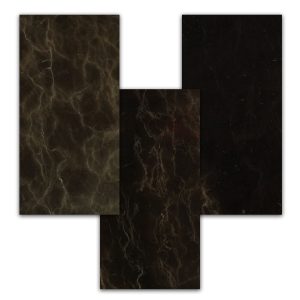White Limestone: The Beauty of Minimalism in Natural Stone
White Limestone stands out for its simplicity, elegance, and versatility among the many natural stones used in construction and design. Its soft, natural texture and bright, neutral hue make it a popular choice for designers and architects looking to bring a sense of light and spaciousness to their projects. In this article, we will explore the characteristics, applications, and advantages of White Limestone and why it continues to be a material of choice for those aiming to create minimalist yet luxurious spaces.
Origins and Geological Composition
Limestone is a sedimentary rock primarily composed of calcium carbonate (CaCO3). It forms over millions of years by accumulating organic materials like coral, shells, and algae. The formation process takes place in marine environments, where these materials settle and compact under pressure, resulting in a relatively soft and porous stone. White Limestone, in particular, is highly prized for its pure and uniform color, often enhanced by small fossil fragments or subtle veining.
This stone is quarried in many regions worldwide, including countries like Iran, Spain, Turkey, and Italy, each offering slight variations in texture and color based on the unique environmental conditions of the region. However, White Limestone is most sought after for its fine grain, uniformity, and bright, reflective surface, which makes it an ideal choice for modern architectural and design applications.
Aesthetic Qualities of White Limestone
White Limestone’s aesthetic appeal lies in its understated elegance. The stone’s natural lightness and minimalistic appearance make it a versatile option that can be easily integrated into various design styles. Whether used in traditional, contemporary, or futuristic spaces, the stone adds a soft, organic feel that contrasts beautifully with bolder materials like wood, metal, or concrete.
The purity of its color allows White Limestone to act as a blank canvas, which can be paired with various colors, textures, and materials to create dynamic and eye-catching designs. Its subtlety also ensures that it doesn’t dominate a space but enhances the overall ambiance with its soft, soothing tones.
Key Characteristics and Benefits
Brightness and Reflectivity: One of the main advantages of White Limestone is its ability to reflect light, making spaces feel larger and more open. This quality is especially beneficial in interior spaces with limited natural light, as the stone can enhance brightness and create an airy, welcoming atmosphere.
Texture: White Limestone typically has a fine-grained, smooth texture, giving it a soft, tactile feel. This makes it an excellent choice for spaces where both aesthetic and sensory experiences are important, such as bathrooms, living rooms, and retail environments.
Porosity: While limestone is naturally porous, this can be managed with proper sealing. When sealed, it becomes more resistant to staining and moisture absorption, making it suitable for a range of indoor and outdoor applications.
Workability: Limestone is relatively easy to cut and shape compared to harder stones like granite or marble. This makes it a preferred material for custom designs, intricate carvings, or large-scale architectural features.
Cost-Effective: White Limestone is generally more affordable than other natural stones like marble or granite. This makes it an attractive option for large-scale projects or for homeowners who want the beauty of natural stone without the high price tag.
Applications of White Limestone in Design
The versatility of White Limestone makes it suitable for a wide range of applications in both residential and commercial spaces. Below are some of the most popular uses of this timeless material:
Flooring: White Limestone is frequently used for flooring in modern homes and commercial spaces. Its light color helps brighten rooms, and its smooth texture creates a refined, minimalist look. Its natural stone surface adds a unique tactile quality underfoot, giving spaces a luxurious feel.
Wall Cladding: Interior and exterior walls benefit greatly from adding White Limestone cladding. When used indoors, the stone’s lightness can make small rooms feel more spacious. At the same time, in outdoor applications, it provides a stunning contrast to darker architectural elements like metal frames or wooden beams.
Facades: White Limestone is commonly used for building facades due to its aesthetic appeal and workability. Its clean lines and subtle veining add a refined elegance to exteriors, and when properly sealed, it holds up well in various weather conditions.
Countertops: White Limestone is less durable than granite or quartz, but it is still used in kitchen and bathroom countertops when properly sealed and maintained. Its unique texture and soft color can transform these functional areas into elegant spaces, though care must be taken to protect them from spills and acidic substances.
Fireplaces: A White Limestone fireplace is often the focal point of a room, adding warmth and sophistication. The stone’s neutral tone works well in both traditional and contemporary interiors, and its heat resistance makes it a practical choice for such applications.
Paving and Landscaping: White Limestone is used for patios, walkways, and even pool decks in outdoor settings. Its light color helps reduce heat absorption, making it a comfortable option for areas exposed to direct sunlight. The stone’s natural beauty blends well with the surrounding greenery, enhancing the overall aesthetic of gardens and outdoor living spaces.
Maintenance and Care
Despite its beauty, White Limestone requires proper care to maintain its appearance. The stone is relatively soft and porous, which makes it more susceptible to scratching, staining, and etching than harder stones like granite. To protect its surface, White Limestone should be sealed upon installation and resealed periodically, depending on usage and exposure to moisture.
A pH-neutral cleaner is recommended for daily maintenance to avoid damaging the stone. Acidic substances such as lemon juice, vinegar, and harsh cleaners should be avoided, as they can cause etching and dull the stone’s finish. Additionally, spills should be wiped up immediately to prevent staining, especially in kitchen areas.
Using rugs or mats in high-traffic areas can help protect the stone from excessive wear, while felt pads on furniture will prevent scratches.
Environmental Considerations
Limestone, as a natural material, is an environmentally friendly choice compared to synthetic alternatives. It is widely available and can be sourced locally to reduce transportation emissions. Additionally, the stone’s long lifespan and durability mean it does not need to be replaced as frequently as other materials, further reducing its environmental impact.
However, like all-natural stone quarrying, extraction can have environmental impacts, such as habitat disruption and energy consumption. Fortunately, many quarries are adopting sustainable practices to minimize these effects by using advanced technologies and reducing waste.
Conclusion
White Limestone is a natural stone that offers both beauty and practicality in design. Its light, neutral color, versatility, and affordability make it an ideal choice for various applications, from flooring and cladding to countertops and outdoor paving. While it requires proper care and maintenance, the timeless elegance of White Limestone makes it a worthy investment for any space.
White Limestone is perfect for creating minimalistic, bright, and sophisticated environments that blend natural beauty with modern design sensibilities.




















Reviews
There are no reviews yet.